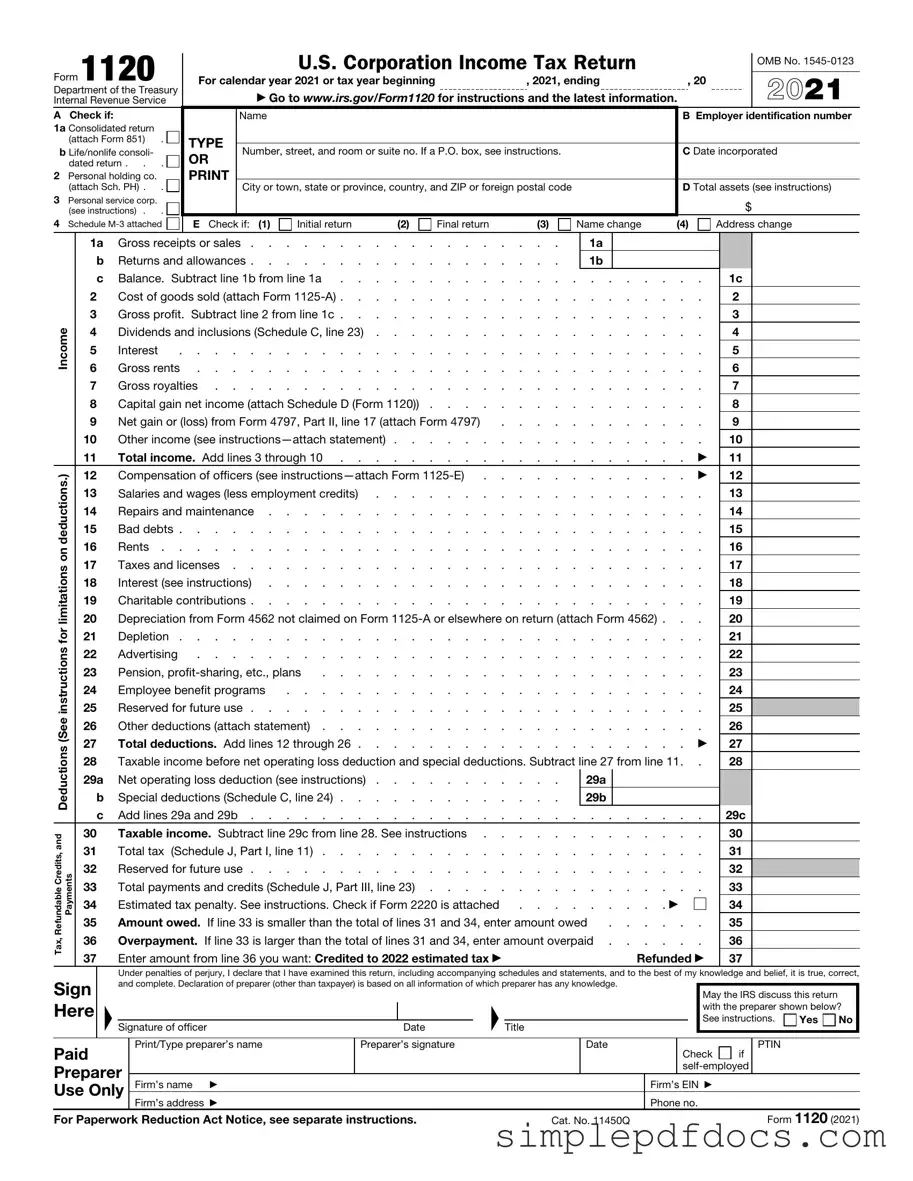The IRS 1120 form is a crucial document for corporations operating in the United States, serving as their official tax return. It plays a significant role in reporting income, gains, losses, deductions, and credits to the Internal Revenue Service. Corporations, including C corporations, must file this form annually, detailing their financial activities for the year. The form requires information about the company’s revenue, expenses, and the taxes owed, ensuring compliance with federal tax laws. Additionally, the IRS 1120 form includes sections for calculating taxable income, reporting dividends, and addressing any applicable tax credits. Understanding the nuances of this form is essential for corporate tax planning, as it can impact a corporation's overall tax liability and financial health. By accurately completing the IRS 1120, corporations can not only meet their legal obligations but also take advantage of potential tax benefits, making it a vital component of their fiscal strategy.
